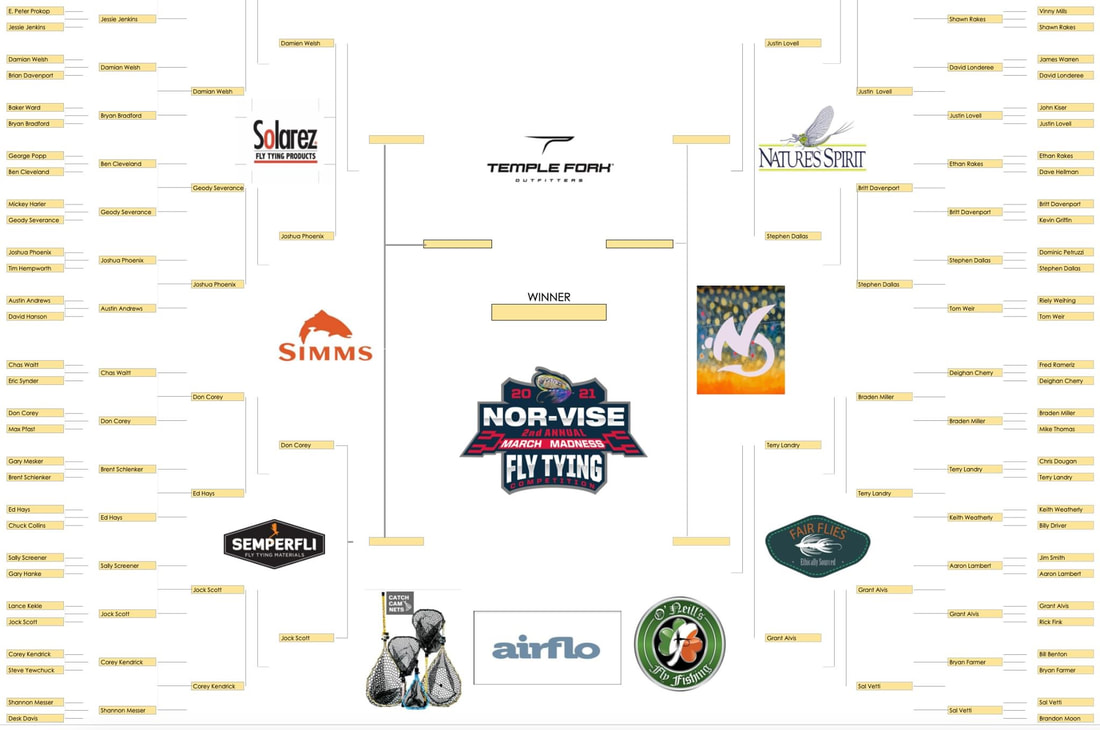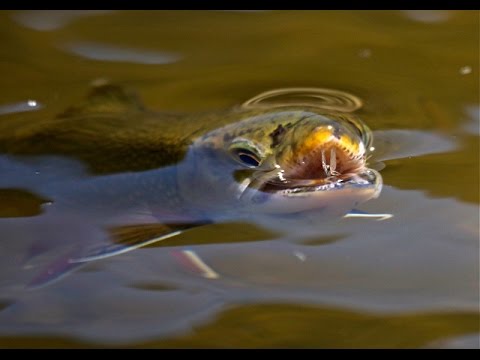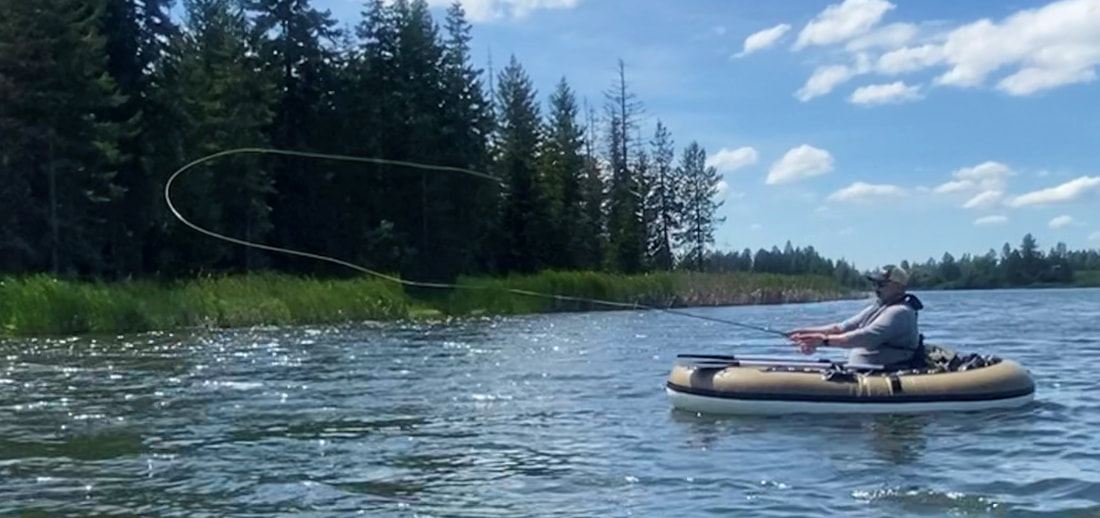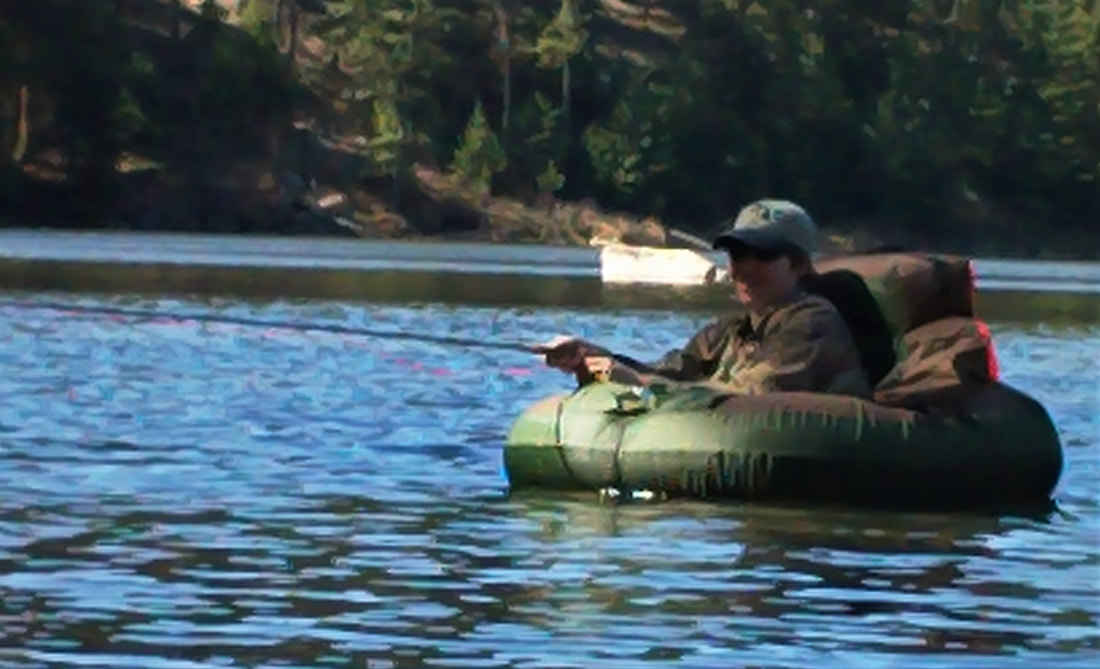|
By Norvise ambassador Brian Davenport. Everyone has a comfort zone-whether in fly tying or fly fishing. Some folks are comfortable at tying certain styles of flies, or fishing in a certain style. But not too many folks are comfortable with more than a couple types of styles of fishing or tying. The ones that are comfortable with various styles, you can bet they are the ones consistently catching fish. During the Norvise March Madness competition there were 64 tiers and some very accomplished tiers. Even some of the more accomplished tiers found themselves being pushed out of their comfort zone by the fly categories that were drawn. It’s not that they could not tie the flies, but that the type of flies were different than what they normally tie. Some really awesome flies were tied, as they stepped out of their comfort zone. As for your comfort zone while fly fishing, I know some fly fishers who follow the motto of dry fly or die. When you consider that trout especially, eat 90% of their food subsurface, that does not give them very favorable odds of consistently catching fish. I also know some anglers that only fish subsurface and refuse to fish a dry fly. They are also missing out in some circumstances, like when a hatch is on. Some anglers are so set to one style of fishing, to the point of they will avoid certain places to fish because they cannot fish it the way they are comfortable with. My favorite fishing partner loves to fish dry flies, and I mean who doesn’t- it is very cool to see the fish come up and take your fly off the top. But she was missing out on other times because that is all she would fish. However, over the last couple of years she has started expanding outside her comfort zone, to include streamer fishing and swinging a wet fly. Last year we both got out of our comfort zone more, and started to learn and experiment with Euro Nymphing. After reading several articles and talking to some friends about how it is done. We gave it a try on several outings. We had some awesome days on the water, that likely would have only been so-so using other methods. We live in central Idaho along the Clearwater River. During steelhead season we swing a wet fly with two handed rods for steelhead, however we are going on the Norvise hosted trip to Steelhead Alley this fall. Tim has said that a lot of times they fish with nymphs and indicators as swinging a fly is only when conditions are right-which doesn’t happen too often. I have fished this way for trout and am not very proficient at it, and have had very limited success- so it is definitely out of my comfort zone. I plan on reading up the technique, watching videos and pestering everyone I know that has fished for steelhead in this manner to learn more about it. Also, on my trout fishing outings this year, I may try fishing with an indicator rig more often, so that I can get better at it and more comfortable with it. Now I am definitely not suggesting to give up your favorite flies that you tie, or your favorite fishing technique. I’m just saying that if you normally fish with dry flies, perhaps work a run with the dry fly and then work your way back thru with a nymph rig. Fish most of the day with your preferred method but set aside a couple hours to specifically fish different types of water and different method. This also brings up another point-go and fish different bodies of water! A lot of people go to the same body of water and fish the same holes with the same methods each time they go out. Don’t be afraid to step out of that comfort zone and fish a different body of water or a different place on that body of water. If you are willing to step out of your comfort zone it will help you become a more rounded tier and angler and you might just have some great days on the water while venturing outside of your zone! Till Next Time...
Tight Lines. By Norvise ambassador Brittany Davenport. Are your favorite trout rivers blown out due to runoff or spring rains? Here in Idaho, we have a nice window of trout fishing pre-runoff. But once the snow pack starts to melt, well, it just makes more sense to look for other options until the flows subside a bit. (Not that trout can’t be caught during run off… but that’s a topic for another day and another blog post! In past few years, I was introduced to lake fishing, and specifically, fishing for panfish. When I started fly fishing, I jumped straight to trout fishing—and somewhat overlooked fishing for panfish, the typical gateway drug for many folks. I have been eagerly awaiting the arrival of spring temps, and the local lakes and reservoirs to ice out and start warming up a bit. We’ve had a couple nice warm spring days to tempt us, and it is finally time! Spring fishing for panfish can also be a great cabin fever reliever if you have been stuck inside all winter. Spring fishing for panfish is also a great opportunity to bring a child or new fly fisher along. Panfish have a way of bringing out the kid in any angler, even the seasoned ones! They are a willing target, and a blast to catch, for anglers of any age! Now let's talk gear. First, be sure to have a good pair of polarized sunglasses. This will help cut the glare on the water and make it easier to see fish in the shallow waters. I like to use a 4 wt rod. Mine are 9’, but a shorter one is adequate. Some folks drop down to a 3 or 2 wt rod. The catching is more fun, that is for sure! But if you encounter wind, you are at more of a disadvantage with those lighter setups. Any time you are lake fishing, it is beneficial to have a variety of fly lines—a weight forward, and various sinking lines. However, when targeting panfish in the spring, a WF will do just fine. I like to use a 7 1/2’ 4x or 5x leader. You can also purchase some poly sinking leaders, if you want to get just a little deeper. The nice thing about spring fishing is that the fish are generally in the shallower, warmer areas of the lake. Also be sure to bring along some indicators (ie. Bobbers) to suspend flies from. As for flies, general lake fishing patters are adequate. Thankfully, panfish usually aren’t extremely picky. And during the spring, the bull panfish are more aggressive. Flies with movement are a safe bet. You can use some high floating flies, like a small popper, as an indicator as well. I like to use wet flies, small streamers, and small bead head nymphs. A chartreuse copper john will likely always be one of my favorites for panfish. They just can’t resist. Editors note: the Norvise Fine Point Conversion is perfect for tying the type of flies Brittany is talking about here. As for access, we really love to fish our lakes and reservoirs from our Maxxon XPW-239s. They allow for great fishing, maneuverability, comfort, and I can pack both of them down and fit them in the back of my Subaru. You can use a pontoon or belly boat (float tube). However, the water is still on the colder end of things, so be sure to wear your waders, and appropriate layers underneath. If the bottom of lake is firm, you can wade along the shoreline-and fish parallel to it. If the bottom is soft however, your best bet is to stay on shore. Be sure to watch your back cast! The other options would be a boat, kayak or canoe. Use what you have. Simple as that. And if you don’t have any watercraft, stick to the docks, shore, etc. You can still find plenty of fish. Now for tactics—so at this point in the year, panfish will be moving into the shallower, warmer water. Fishing is usually best once the sun has warmed up the surface water. So it does afford some sleeping in, and enjoying your coffee in the morning, before you have to get out. Often times, bays and coves will be a bit warmer than the rest of the lake. These warmer areas often have the newer weed growth, which draws plankton and aquatic insects, which are food sources for the panfish. Crappie typically spawn in 5 to 6 feet of water or more, while bluegills are shallower, in 1 to 5 feet of water. Keep in mind though, that often, the bigger blue gills will hang out in the 4 to 6 foot range, with the smaller fish being in the shallower water. One effective way to target them in the spring (and any time really) is to float a fly under an indicator, or buoyant dry fly. Set the depth accordingly. If you find a weed bed, set the depth so you are fishing just over top of it. Use flies that have plenty of movement, to elicit a strike from the bull fish. As to presentation, you can let it sit and twitch it occasionally, or use a slow retrieve with a number of pauses in it. If you find you are catching smaller fish, try using a bigger presentation, or a heavier one, that will drop quicker. Often times the bigger panfish hang out below the smaller ones. There is a great amount of information available on the web, about fishing for panfish in the Spring. If it peaks your curiosity and cabin fever, a quick google search can keep you busy for hours. If you do the Facebook thing, there is a great group called Panfish on the Fly, that is also a source of great information. As we look forward to warmer summer days, while our rivers are blown out, panfish can offer us a much needed excursion to wet a line. I truly believe, that no matter an anglers experience, we can all have a dang good time fishing for panfish. There is just something about it that brings us back to simpler times and makes us feel like a kid again.
And on that note… bring a kid or new angler along with you. They will forever remember their time spent with you chasing the eager little fish at your local pond. Till next time... Tight lines. |
Archives
June 2024
Categories
All
|















 RSS Feed
RSS Feed
